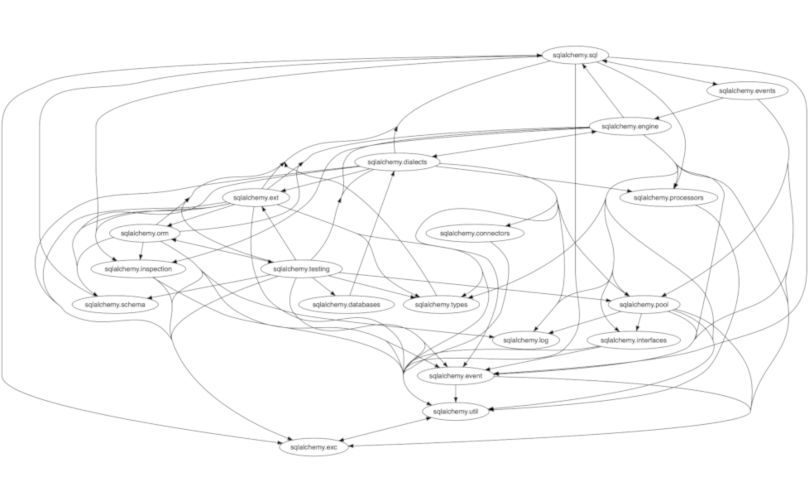Python is a wonderful language that is a joy to develop in. But I've found that projects written in Python can easily grow into an unmaintainable mess. Keeping a code base maintainable, particularly when it's large and complex, is difficult.
A common strategy is to organise it into smaller, decoupled subpackages. But that’s easier said than done. Circular dependencies between these subpackages have a nasty habit of creeping in. Over time, what you worked hard to separate creeps inexorably together.
Part of the problem is that Python has no formal way of declaring, and enforcing, a dependency flow. That’s why I wrote Import Linter.
(Note: This is an adaptation of an earlier blog post of mine, adapted for the newer version of the tool.)
What Import Linter does
Import Linter is a tool that helps impose a structure on your Python project, based on its dependency flows. It analyses which modules are importing which, and checks this conforms to a contract defined by you.
Each contracts must be of a particular type, depending on what sort of constraints you wish to impose. For example, an independence contract checks that there are no imports between a given list of subpackages. If one of the built in contract types doesn’t meet your needs, you may create a custom contract type instead.
Usage
To use Import Linter, first you need to write your contract. You do this in a .importlinter
file that looks something like this:
[importlinter]
root_package = mypackage
[importlinter:contract:1]
name = My independence contract
type = independence
modules =
mypackage.foo
mypackage.bar
mypackage.baz
You then run:
$ lint-imports
The report will tell you whether you’re following your contract. If you’re using
continuous integration,
you can add the lint-imports command to your test pipeline to ensure that everyone in your team adheres to the
architectural rules.
Example: Layer contracts
A powerful contract type is the layers contract. This allows you to impose a classic ‘Layered Architecture’ on your project.
In this contract, you describe an ordered list of layers. Each layer is just a subpackage or module within your codebase. The contract stipulates that any code within a layer lower down the list must not import, even indirectly, anything from a higher up layer.
For example, you could decide to structure your project using three layers:
interfaces(highest level)domaindata(lowest level)
This contract would be defined in your .importlinter file as follows:
[importlinter]
root_package = mypackage
[importlinter:contract:1]
name = My three-tier layers contract
type = layers
layers=
interfaces
domain
data
containers=
mypackage
You can then run Import Linter’s command line tool to see if anything is not adhering to your architecture. Here’s what the output might look like:
$ lint-imports ============= Import Linter ============= --------- Contracts --------- Three tier architecture BROKENContracts: 0 kept, 1 broken. ---------------- Broken contracts ---------------- Three tier architecture ----------------------- myproject.data.userrecord is not allowed to import myproject.domain.user: myproject.data.userrecord -> myproject.domain.user (l. 5) myproject.domain.user is not allowed to import myproject.interfaces.api: myproject.domain.user -> myproject.common.apitools (l. 1) myproject.common.apitools -> myproject.interfaces.api (l. 10)
In this report, Import Linter is telling you that you’re not
adhering to your architecture in two places. First, the data layer
(which is the lowest level) is importing from domain (which is a mid level layer).
Second, domain is importing (via a package not listed in the contract) something
from interfaces (the highest layer).
Other architectural styles
You can define other architectural styles with layers contracts. One example is a more modular layered style which I call the ‘Rocky River’. Another is ports and adapters, a.k.a ‘hexagonal architecture’.
For more detailed information about how to use Import Linter, see the docs.
If you have any feedback, or questions about using Import Linter, I’d love to hear from you - just get in touch.
Further information
- Import Linter documentation.
- The Layers pattern in Chapter 2 of Pattern-Oriented Software Architecuture Vol. 1 (Buschmann, Meunier, Rohnert, Sommerlad and Stal, 1996).
- My talk on layers and the Rocky River pattern.
- Encapsulated Django.
- 6 ways to improve the architecture of your Python project (using import-linter) - blog post by Piglei.

Comments